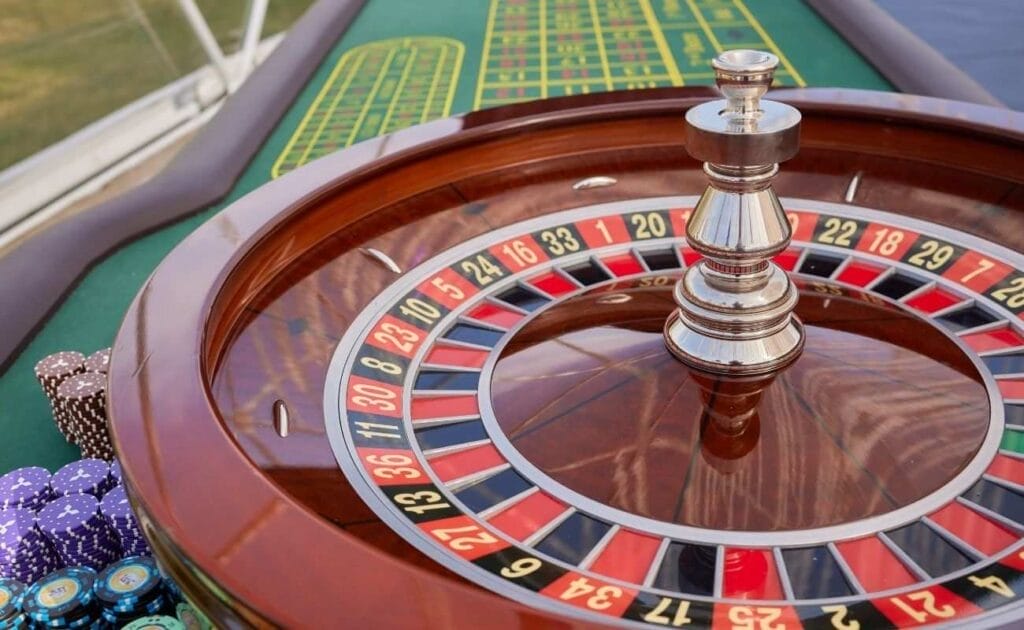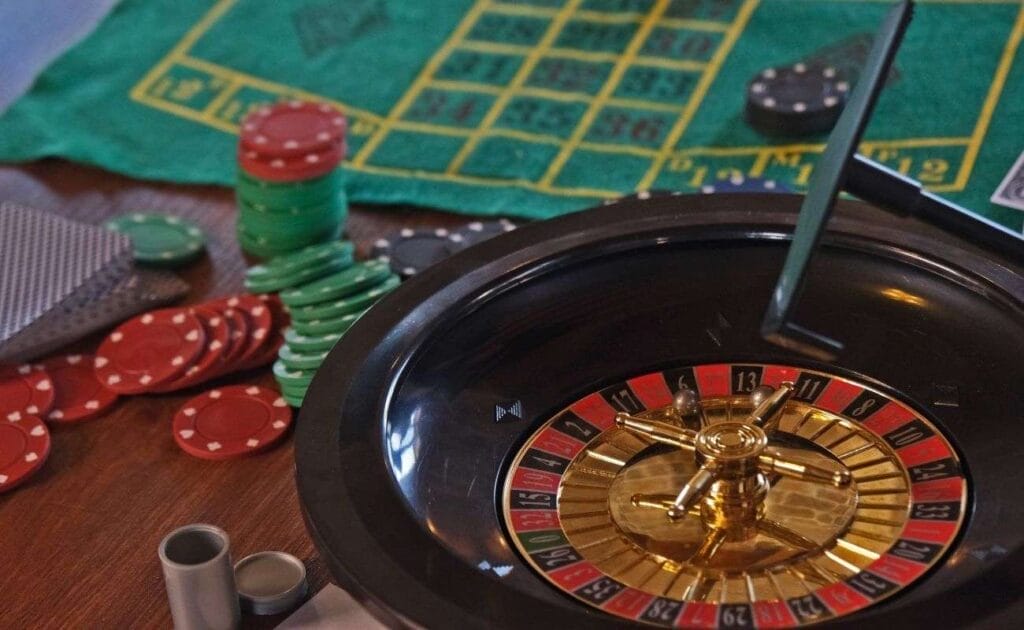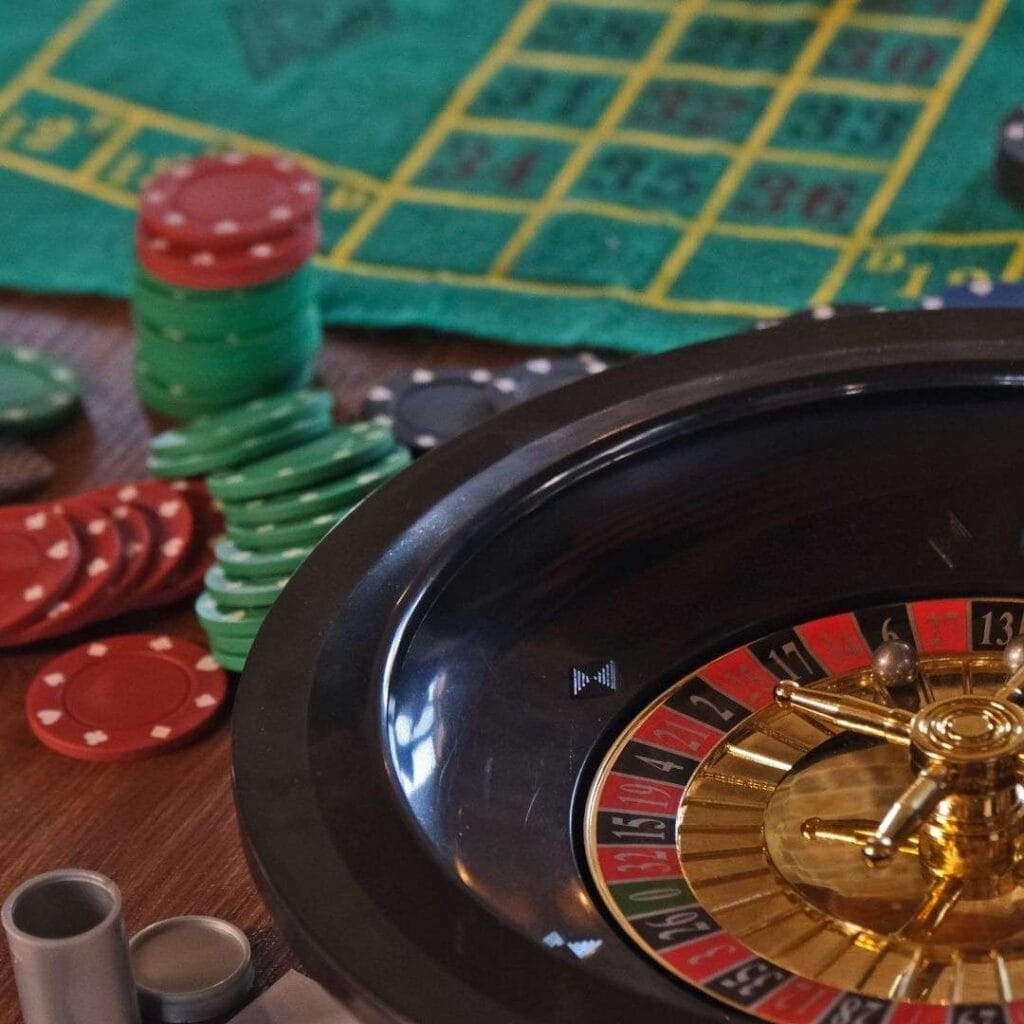
The classic casino combination of roulette table and wheel has entertained gamblers for centuries. The centerpiece of this timeless gaming experience is undoubtedly the spinning wheel itself. In fact, the name of the game means “little wheel.”
Whether you encounter it in a land-based casino or an online roulette platform, a casino roulette wheel has to be the ultimate symbol of chance. A finely crafted wheel is much more than a mechanical device designed to generate random outcomes; it’s a masterpiece that combines centuries of history, engineering precision, technical expertise, and craftsmanship. Keep on reading to discover what goes into making roulette wheels.
Roulette Wheel Components

A standard roulette wheel measures 32 inches across. (How big is a roulette table? Usually 110 by 55 inches).
The wheel consists of a rotating central piece called the wheelhead, or cylinder, that rotates inside an external mechanism known as the bowl.
Made of wood or (more commonly) fiberglass-reinforced plastic, the bowl includes a ball track that the ball spins along and a lower ball track or apron with ball deflectors that keep the ball on track. A vertical part called a spindle supports the wheelhead or rotor.
The wheelhead itself is 20 inches across, and it’s where all the action is because it’s the part that spins. Fitted with upper and lower ball-bearing mechanisms, the wheelhead has a circle of alternating red and black roulette wheel numbers marked 1–36 on its outer edge, with the ball pockets inside the numbers.
There are two standard roulette variants: European Roulette, which has a single green zero pocket, and American roulette, which has an additional green double zero pocket. Both types have the same diameter wheel.
In the center of the wheelhead is a cone that slopes upward toward the center. The cone’s function is to redirect the spinning ball to the pockets. At the center of the cone is the turret, which contains the wheelhead’s height-adjusting mechanism. This is important because if the outer edge is higher than the apron’s lower edge, the ball may not drop into a pocket.
The Manufacturing Process
Manufacturing a quality wheel is a meticulous, high-precision process that requires skilled artisans, precise engineering, and stringent quality control measures.
First, a team of designers and engineers draws up the specifications, taking into consideration the desired size, weight, balance, and aesthetics. Materials selection is especially important to ensure the right quality and performance. In the past, wood, metal, and ivory were the materials of choice, but today’s wheels are mostly manufactured from acrylic, fiberglass-reinforced plastic, and other synthetic materials.
Once the design is finalized, designers use computer-aided design (CAD) programs to draw up a three-dimensional mold. Machinists then manufacture the pockets, carving them out to the specified shape and size with specialized CNC machines. After that, the pockets are fitted together to form the wheel’s outer ring, and the ball track is embedded into the wheel with laser technology. The ball track delineates the path the ball will follow when spun, so consistency and accuracy are vital.
When the ball track has been laid in, ball stops are positioned carefully between the pockets to prevent the ball from bouncing out. The rotor is also constructed and fitted to the wheel hub.
Quality Control & Certification

Once the assembly process is complete, skilled artisans meticulously test the wheel’s alignment. To achieve perfect balance, they measure the wheel’s center of gravity and fine-tune the wheel segment distribution.
When the wheel is properly aligned, it’s time to apply the finishing touches. The wheel is duly polished and painted, and a glossy protective coating is applied.
Before the wheel leaves the factory, specialists perform a series of rigorous quality control checks to ensure that the wheel’s spin time, balance, weight distribution, and overall functionality meet industry standards.
Once the wheel passes quality control, regulatory bodies certify that it’s fair and complies with gambling regulations. The final certified product is then purchased by a casino, where it will form an integral part of the gaming experience for up to a couple of decades.
The best roulette wheels in the world are built to last by leading brands such as Paul-Son, Cammegh, and TCS John Huxley, winner of the International Gaming Awards 2011, Sands Suppliers Excellence Awards, and Gaming Awards 2013, among others.
A Safe, Fair Gaming Experience
One of the most common questions players ask about roulette wheels is whether they can be rigged or the dealer can control the ball’s spin in some way. The fact of the matter is that human beings are capable of rigging just about anything, casino roulette wheels included. The good news, though, is that the wheels in legitimate casinos are certified to generate truly random outcomes. In other words, you can always count on a safe, fair gaming experience so you can develop successful roulette strategies with peace of mind. Just make sure that you’re playing in a reputable casino that’s licensed and regulated by the state gaming commission.
Play Roulette Online at Borgata Online
Keen to take a spin on a roulette wheel online? Register to explore multiple online roulette options, from single-player RNG games to live casino variations with real dealers, streaming in real time. Beyond roulette, you can explore a broad range of top-rated casino games online, including slot machines, variety games, and classic table games such as blackjack, baccarat, and craps. Get your game on at Borgata Online.
